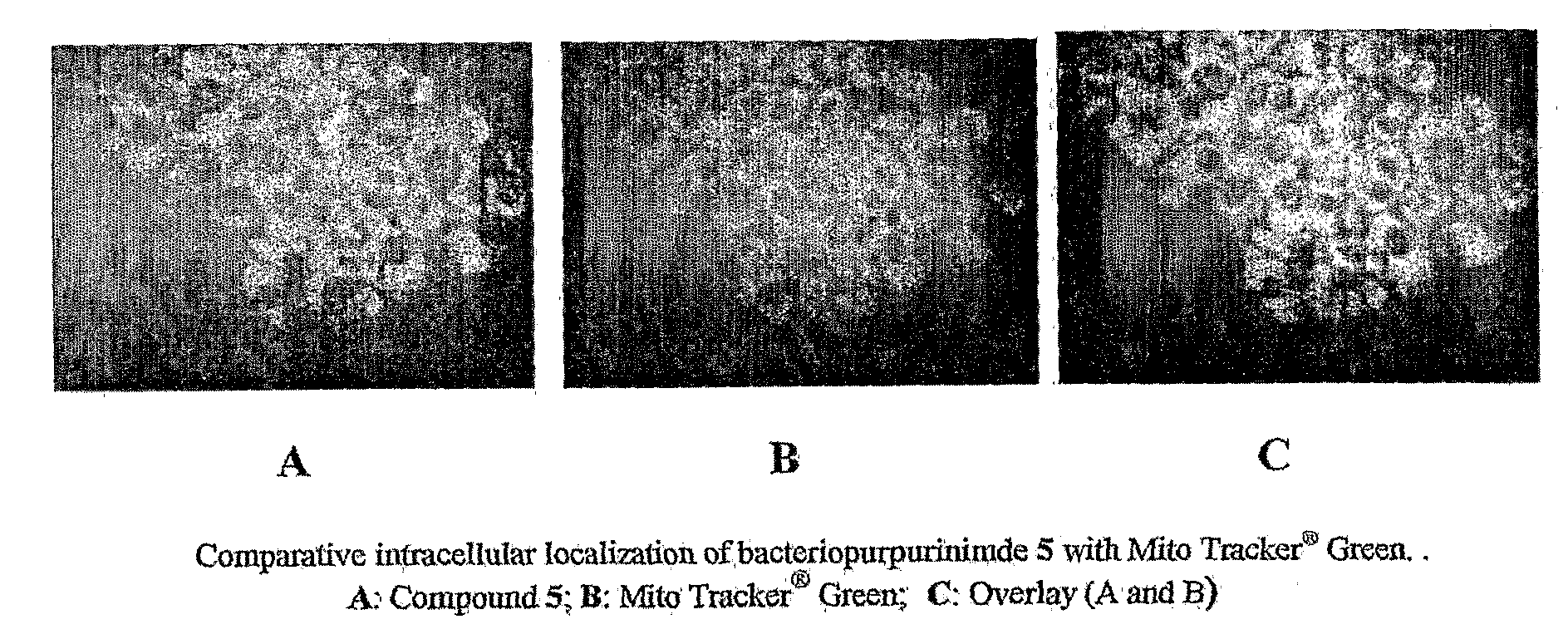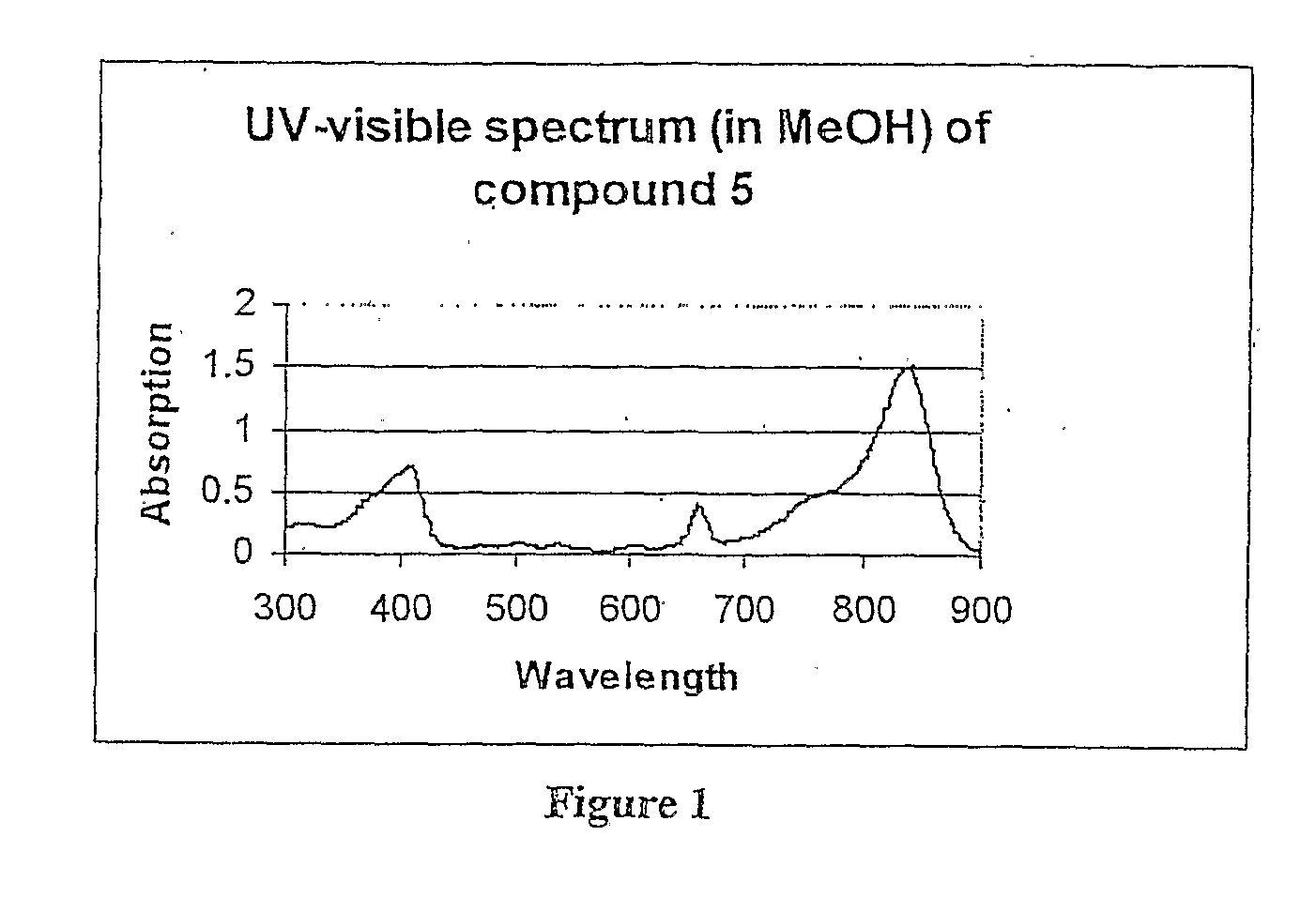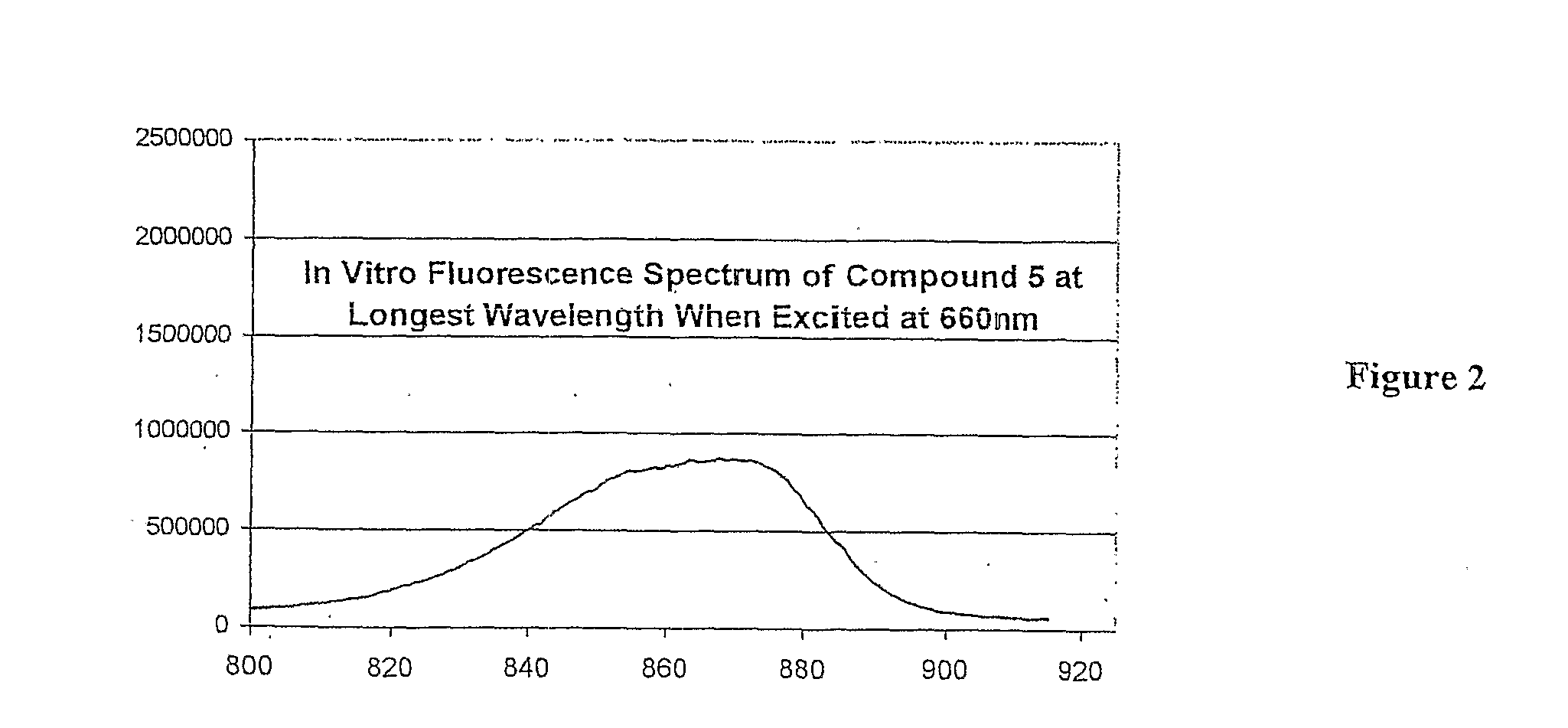Adduct of fluorescent dye and tumor avid tetrapyrrole
a technology of avid tetrapyrrole and fluorescent dye, which is applied in the field of additives of fluorescent dye and tumor avid tetrapyrrole, can solve the problems of high cost of procedures, many such tumors can be killed, and diagnostic information is not immediately available, so as to reduce the likelihood of toxicity, facilitate the entry of the structure, and reduce the storage in fatty tissues
- Summary
- Abstract
- Description
- Claims
- Application Information
AI Technical Summary
Benefits of technology
Problems solved by technology
Method used
Image
Examples
Embodiment Construction
[0037]“Preferential electromagnetic absorption at a wavelength between about 660 and 900 nm” means that within a UV band of from about 300 to 900 nm there is a peak absorbance between 660 and 900 nm that is at least twice and usually at least three times that of any other peak absorbance within the band. “A fluorescence at a wavelength shifted from the preferential absorption by at least +30 nm and preferably at least +50 nm” means that emission (fluorescence) wavelength, resulting from excitation at the preferential absorption wavelength, is shifted upwardly from the peak absorbance wavelength by at least 30 and preferably at least 50 nm. While not essential in accordance with the invention, the compound further preferably destroys tumor tissue in which it is absorbed when exposed to light at its preferential absorption wavelength. It is believed that this occurs due to the localized formation of singlet oxygen within cancer tissue in which the compound is preferentially absorbed.
[...
PUM
| Property | Measurement | Unit |
|---|---|---|
| Nanoscale particle size | aaaaa | aaaaa |
| Nanoscale particle size | aaaaa | aaaaa |
| Nanoscale particle size | aaaaa | aaaaa |
Abstract
Description
Claims
Application Information
 Login to View More
Login to View More - R&D
- Intellectual Property
- Life Sciences
- Materials
- Tech Scout
- Unparalleled Data Quality
- Higher Quality Content
- 60% Fewer Hallucinations
Browse by: Latest US Patents, China's latest patents, Technical Efficacy Thesaurus, Application Domain, Technology Topic, Popular Technical Reports.
© 2025 PatSnap. All rights reserved.Legal|Privacy policy|Modern Slavery Act Transparency Statement|Sitemap|About US| Contact US: help@patsnap.com



